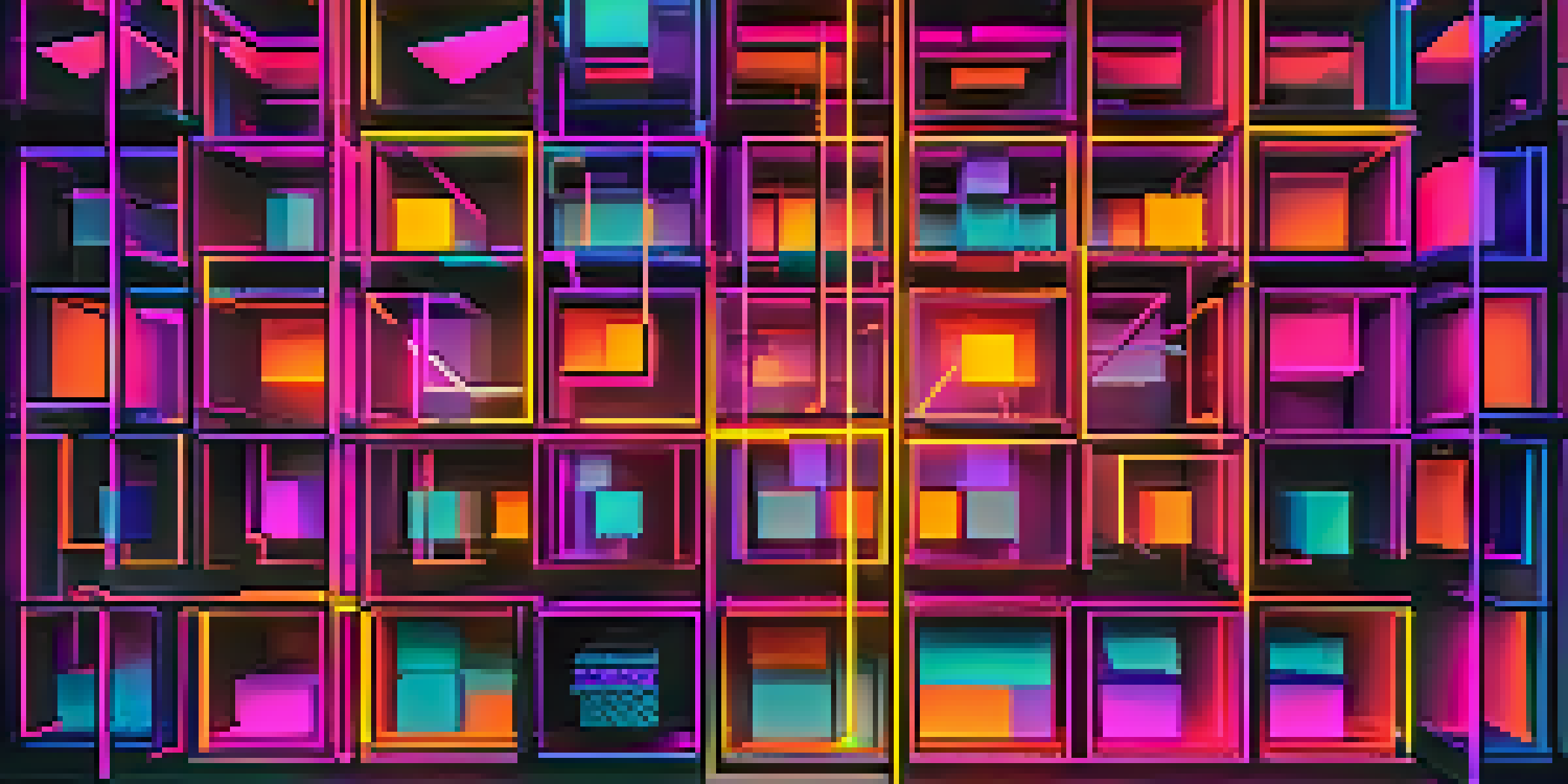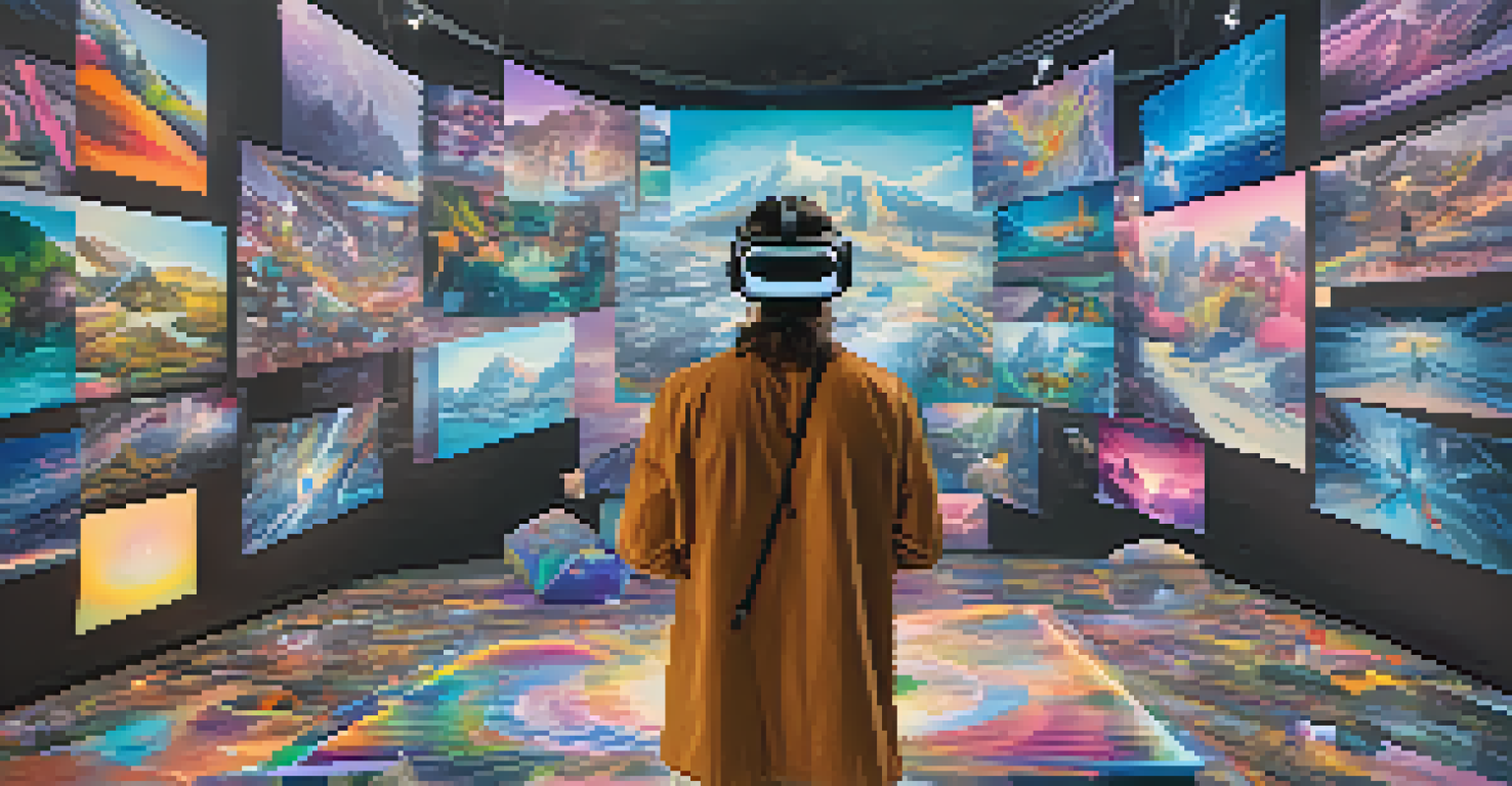The Impact of Blockchain Technology on Future NFT Development

Understanding Blockchain: The Backbone of NFTs
Blockchain technology serves as the foundational framework for NFTs, providing a decentralized ledger that ensures transparency and security. This means that every transaction involving an NFT is recorded in a way that is immutable and verifiable, making it easy for buyers and sellers to trust the authenticity of the assets.
Blockchain is the most significant innovation since the internet itself.
One of the key features of blockchain is its ability to create unique digital identities for each NFT. This uniqueness is crucial because it helps to distinguish one digital asset from another, adding value and ensuring that creators can claim ownership over their work.
As we move forward, understanding blockchain will be essential for anyone interested in the NFT space. Whether you're an artist, a collector, or a developer, knowing how blockchain functions will empower you to navigate this evolving landscape.
NFT Market Trends: Where Are We Headed?
The NFT market has seen explosive growth in recent years, with record sales and a surge in interest from various sectors. As artists and brands leverage NFTs to engage with their audiences, the market is evolving rapidly, showcasing a blend of creativity and technology that attracts a diverse crowd.

One trend to watch is the move towards utility-driven NFTs. These are not just digital collectibles but also provide real-world benefits, like access to exclusive events or services. This added value enhances the appeal and sustainability of NFTs in the long run.
Blockchain Empowers NFT Authenticity
Blockchain technology ensures transparency and security in NFT transactions, helping buyers trust the authenticity of digital assets.
As new trends emerge, staying informed about market dynamics will be vital for anyone looking to invest or create NFTs. Understanding these shifts can help stakeholders make more strategic decisions that align with future developments.
Decentralization: Empowering Creators and Users
One of the most compelling aspects of blockchain technology is its decentralization, which shifts power away from traditional gatekeepers. This empowers creators to directly sell their work to consumers without needing intermediaries, often resulting in better compensation.
The future is already here — it's just not very evenly distributed.
Decentralization also means that users have more control over their digital assets. With NFTs, owners can trade, sell, or showcase their assets as they see fit, fostering a sense of ownership that traditional models often lack.
As we look ahead, this empowerment could lead to more diverse voices and innovative projects within the NFT space. By removing barriers, blockchain technology opens the door for a richer tapestry of creativity and expression.
Interoperability: Connecting Different Platforms
Interoperability refers to the ability for different blockchain networks to communicate with each other. This is crucial for the future of NFTs, as it allows assets to move seamlessly between various platforms, enhancing their utility and reach.
Imagine owning an NFT that can be displayed in multiple virtual worlds or used across different applications. This kind of interoperability could significantly increase the value of NFTs and expand their potential uses in gaming, art, and beyond.
NFTs Blend Utility and Creativity
The shift towards utility-driven NFTs offers real-world benefits, enhancing their value and sustainability in the marketplace.
As developers work towards creating more interconnected platforms, the NFT landscape will become richer and more diverse, offering exciting possibilities for creators and consumers alike.
Sustainability Concerns: Is Blockchain Eco-Friendly?
As the NFT market grows, so do concerns about its environmental impact, particularly regarding energy-intensive blockchain networks. Many people wonder whether the carbon footprint associated with NFT transactions is sustainable in the long run.
In response, there is a growing movement towards more eco-friendly blockchain solutions. Projects that utilize proof-of-stake mechanisms, for example, consume significantly less energy than traditional proof-of-work models, making them more sustainable options.
Addressing these environmental concerns will be crucial for the future of NFTs. By prioritizing sustainability, the industry can ensure that it not only thrives but does so in a way that respects the planet.
Legal Implications: Protecting Intellectual Property
As NFTs gain traction, the legal landscape surrounding them is becoming increasingly important. Issues related to intellectual property rights, copyright, and ownership must be clearly defined to protect creators and users alike.
For instance, when an artist sells an NFT, it's essential to clarify what rights are transferred to the buyer. Are they purchasing the artwork itself, or just the right to display it? Establishing clear guidelines will help avoid misunderstandings and potential disputes.
Legal Clarity is Crucial for NFTs
Establishing clear legal frameworks around intellectual property rights is essential to protect creators and users in the evolving NFT landscape.
As we move forward, legal frameworks will need to evolve alongside the technology. This will not only protect stakeholders but also enhance the overall credibility of the NFT market.
The Future of NFTs: What's Next?
Looking ahead, the future of NFTs appears bright, with ongoing innovations set to reshape the landscape. From enhanced user experiences to new applications in various fields, NFTs are poised to become more integrated into our daily lives.
One exciting possibility is the integration of augmented and virtual reality with NFTs, creating immersive experiences that blend the digital and physical worlds. Imagine attending a concert where you own an NFT that grants you exclusive access to virtual backstage interactions.

As technology continues to evolve, so will the potential uses of NFTs, making it an exciting time to be involved in this space. The opportunities are limitless, inviting everyone to explore and contribute to this dynamic ecosystem.